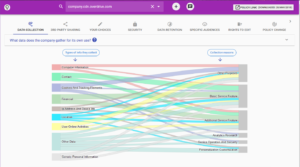Welcome to this week’s Tip of the Hat!
Have you ever wondered what data OverDrive collects while you’re reading the latest ebook? Or what Kanopy collects when you’re watching a documentary? As library workers, we have some sense as to what vendors are collecting, but we are also patrons – what exactly are vendors collecting about *us*?
GDPR and CCPA both give different sets of users (EU residents and CA consumers, respectively) the right to access the data collected by organizations and businesses; however, some organizations extended that right to all users, regardless of geographic residency. Below are some of the more well-known library vendors who are offering some form of data request process for their users (aka library patrons, including you!):
- Cengage
- Elsevier
- Kanopy’s data request appears only to apply to CA consumers: “Under California Civil Code Section 1798.83, if you are a California resident and your business relationship with us is primarily for personal, family or household purposes, you may request certain data regarding our disclosure, if any, of personal information to third parties for the third parties’ direct marketing purposes. To make such a request, please send an email to privacy@kanopy.com with “Request for California Privacy Information” in the subject line. You may make such a request up to once per calendar year. If applicable, we will provide to you via email a list of the categories of personal information disclosed to third parties for their direct marketing purposes during the immediately-preceding calendar year, along with the third parties’ names and addresses. Please note that not all personal information sharing is covered by Section 1798.83’s requirements.”
- LexisNexis
- OverDrive
- ProQuest
- ExLibris, owned by ProQuest, appears to have a different data request process: “You may request to review, correct or delete the personal information that you have previously provided to us through the Ex Libris Sites. For requests to access, correct or delete your personal information, please send your request along with any details you may have regarding the method by which the information was submitted to privacy@exlibrisgroup.com. Requests to access, change, or delete your information will be addressed within a reasonable timeframe.”
What is surprising is that there are not more library vendors that offer this option, or not extending the option to all users. This might change over time, depending on how the newest data privacy ballot initiative in California goes in November, or if additional regulations are passed in other states or even in the federal government. If more companies provide this right to access for all users, then it’s more likely that this practice will become a standard practice industry-wide. LDH will provide the latest updates around data access options from library vendors when they come along!



